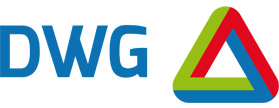A crackling sound as vegetables are cut, the enticing smell of spices wafting in the air and the reassuring hum of machines working together effortlessly. At DWG, we see automation and digitization as the super glue for matching the production environment to the needs of the users.
Our process engineers, electrical engineers, industrial automation engineers and IT engineers work closely with customers to realize expansions, migrations and new production lines with the highest possible degree of automation. Take, for example, the optimization of production lines: our process engineers collect and analyze all available information and documents from the systems. From this, a detailed blueprint rolls out, which serves as the basis for the development of our hardware and software solutions. This enables operators to perform well later, because we give them the right information at the right time.
Clean in Place
Automation and digitization offers more opportunities than just efficiency. It also plays a crucial role in ensuring food safety. The well-oiled cooperation between our software and hardware engineers allows us to meet the strict requirements of a Clean in Place (CIP) procedure. Imagine a company wants to produce a new tomato sauce. It is then important to ensure that the various pipelines are clean and controlled when producing multiple sauces. This is the only way to prevent contamination or pollution. We carefully analyze the process and determine the right timing of controls and the necessary cleaning procedures. By properly integrating systems, we ensure that everything runs smoothly and the highest standards of food safety are maintained.
Transparency and insight
In a factory environment, employees work with different systems and applications that need to exchange information with each other for maximum effectiveness. Our job is to connect these systems, with SCADA (Supervisory Control and Data Acquisition) often playing a central role. This system collects and visualizes data from the control systems so operators can operate, while using an industrial communication standard, we also make this data available to other systems. This integration is critical to ensuring food safety across the board.
Another important aspect is optimizing control systems. In fact, every system in a plant generates alarms and signals that are collected in SCADA. For operators, this flow of information can be overwhelming. We therefore work closely with our customers to minimize unnecessary alarms, for example. In this way, we can improve the efficiency of and control over the production process.
Knowledge and skills
Let’s not forget that people and skills are the backbone of any successful project. In the development and implementation of food safety systems, it is critical to have the right people with the right skills on board. The ability to respond predictively and perform proactive maintenance is becoming increasingly important. More and more plants have smaller engineering departments. Here, employees are now often facilitators in the process. Within our team we have experts in industrial automation, data management and system optimization that can support the customer.
Future trends
Smart industry, in our view, is the way forward: automation, digitization and the smart use of data are becoming increasingly important. Indeed, digitization and automation can speed up processes, improve services and provide in-depth insights. Sharing data is becoming faster and easier than ever before. This access to data opens up a world of possibilities for any company in the food sector. As a systems integrator, we remain committed to supporting and improving the food sector through automation & digitization. Together, let’s embrace its power and pave the way to a safe and efficient food sector.
Would you like to know more?
We would love to hear your story! Simply contact us for a productive meeting over coffee.
Carlo Canter Visscher, sales manager DWG



